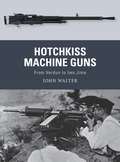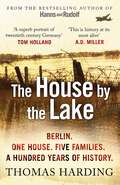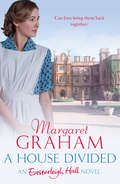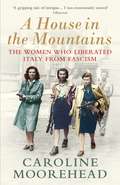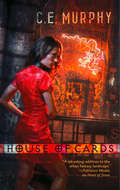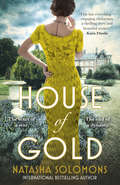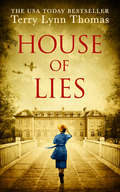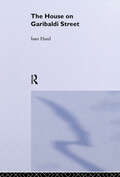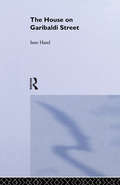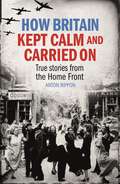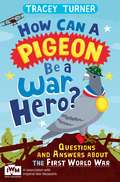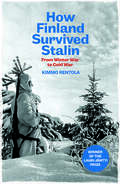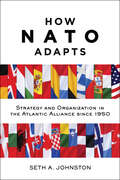- Table View
- List View
Hotchkiss Machine Guns: From Verdun to Iwo Jima (Weapon)
by John WalterCreated by a long-forgotten Austrian nobleman, Adolf Odkolek von Augezd, the air-cooled Hotchkiss machine gun was the first to function effectively by tapping propellant gas from the bore as the gun fired. Although the Hotchkiss would be overshadowed by the water-cooled Maxim and Vickers Guns, it proved its effectiveness during the Russo-Japanese War. The gun, quirky though it was, was successful enough to persuade Laurence Benét and Henri Mercié to develop the Modèle Portative: a man-portable version which, it was hoped, could move with infantrymen as they advanced. Later mounted on tanks and aircraft, it became the first automatic weapon to obtain a 'kill' in aerial combat. Though it served the French and US armies during World War I (and also the British in areas where French and British units fought alongside each other), the Odkolek-Hotchkiss system was to have its longest-term effect in Japan. Here, a succession of derivatives found favour in theatres of operations in which water-cooling could be more of a liability than an asset. When US forces landed on Saipan, Guam and Iwo Jima, battling their way from island to island across the Pacific, it was the 'Woodpecker' – the Type 92 Hotchkiss, with its characteristically slow rate of fire – which cut swathes through their ranks. Supported by contemporary photographs and full-colour illustrations, this title explores the exciting and eventful history of the first successful gas-operated machine gun.
Hotchkiss Machine Guns: From Verdun to Iwo Jima (Weapon #71)
by John WalterCreated by a long-forgotten Austrian nobleman, Adolf Odkolek von Augezd, the air-cooled Hotchkiss machine gun was the first to function effectively by tapping propellant gas from the bore as the gun fired. Although the Hotchkiss would be overshadowed by the water-cooled Maxim and Vickers Guns, it proved its effectiveness during the Russo-Japanese War. The gun, quirky though it was, was successful enough to persuade Laurence Benét and Henri Mercié to develop the Modèle Portative: a man-portable version which, it was hoped, could move with infantrymen as they advanced. Later mounted on tanks and aircraft, it became the first automatic weapon to obtain a 'kill' in aerial combat. Though it served the French and US armies during World War I (and also the British in areas where French and British units fought alongside each other), the Odkolek-Hotchkiss system was to have its longest-term effect in Japan. Here, a succession of derivatives found favour in theatres of operations in which water-cooling could be more of a liability than an asset. When US forces landed on Saipan, Guam and Iwo Jima, battling their way from island to island across the Pacific, it was the 'Woodpecker' – the Type 92 Hotchkiss, with its characteristically slow rate of fire – which cut swathes through their ranks. Supported by contemporary photographs and full-colour illustrations, this title explores the exciting and eventful history of the first successful gas-operated machine gun.
Hotels, Hospitals, and Jails: A Memoir
by Anthony SwoffordThe publication of Jarhead launched a new career for Anthony Swofford, earning him accolades for its gritty and unexpected portraits of the soldiers who fought in the Gulf War. It spawned a Hollywood movie. It made Swofford famous and wealthy. It also nearly killed him. Now with the same unremitting intensity he brought to his first memoir, Swofford describes his search for identity, meaning, and a reconciliation with his dying father in the years after he returned from serving as a sniper in the Marines. Adjusting to life after war, he watched his older brother succumb to cancer and his first marriage disintegrate, leading him to pursue a lifestyle in Manhattan that brought him to the brink of collapse. Consumed by drugs, drinking, expensive cars, and women, Swofford lost almost everything and everyone that mattered to him. When a son is in trouble he hopes to turn to his greatest source of wisdom and support: his father. But Swofford and his father didn't exactly have that kind of relationship. The key, he realized, was to confront the man-a philandering, once hard-drinking, now terminally ill Vietnam vet he had struggled hard to understand and even harder to love. The two stubborn, strong-willed war vets embarked on a series of RV trips that quickly became a kind of reckoning in which Swofford took his father to task for a lifetime of infidelities and abuse. For many years Swofford had considered combat the decisive test of a man's greatness. With the understanding that came from these trips and the fateful encounter that took him to a like-minded woman named Christa, Swofford began to understand that becoming a father himself might be the ultimate measure of his life. Elegantly weaving his family's past with his own present-nights of excess and sexual conquest, visits with injured war veterans, and a near-fatal car crash-Swofford casts a courageous, insistent eye on both his father and himself in order to make sense of what his military service meant, and to decide, after nearly ending it, what his life can and should become as a man, a veteran, and a father.
Hour of the Assassin
by Matthew QuirkFormer Secret Service agent, Nick Averose, must expose a dark conspiracy in this electrifying thriller from New York Times bestselling author Matthew Quirk.'Opens with a bang and keeps exploding for three hundred pages' DAVID BALDACCI His job is to protect them.As a secret service agent, Nick Averose spent a decade guarding the most powerful people in the US. Now, he's a mock killer, testing the security around the highest officials to find vulnerabilities, before America's enemies can.But now someone's out to get him.Nick's latest assignment leads him to the home of a former CIA director. But when he breaches the director's study, Nick is entangled in a vicious crime. One that will shake Washington to its foundations.He's the perfect scapegoat.Nick needs to find out who is framing him for the crime and why. If he can't uncover the truth, a dark conspiracy will consume him and everyone else within the Oval Office...Praise for Matthew Quirk:'Breathless stay-up-late suspense' Lee Child'A plot that twists like a cobra in a sack, a whip-crack pace and engaging characters' Financial Times'David Baldacci territory, but done with a refreshing vigour by Quirk who is making a name for himself as a thriller writer to watch' Daily Mail'Quirk has earned his spot in the front ranks of thriller writers' David Baldacci'Quirk moves into John Grisham territory with The Night Agent, a paranoid, pulse-pounding thriller that could not be more prescient' Joseph Finder'A captivating narrative that takes us inside the White House's inner sanctum and the shadowy machinations surrounding it. A powerful and taut thriller' Mark Greaney'This story is impossible to put out of mind... Relevant and revealing, this is one of the best thrillers to come along in years' Michael Connelly'Strap in for one hell of a ride. The Night Agent is full of twists and surprises you'll never see coming' Ben Coes
The House by the Lake: A Story Of Germany
by Thomas HardingSHORTLISTED FOR THE COSTA BIOGRAPHY AWARD 2015LONGLISTED FOR THE ORWELL PRIZE 2016 A RADIO 4 BOOK OF THE WEEK‘A passionate memoir.’ Neil MacGregor‘A superb portrait of twentieth century Germany seen through the prism of a house which was lived in, and lost, by five different families. A remarkable book.’ Tom Holland‘Personal and panoramic, heart-wrenching yet uplifting, this is history at its most alive.’ A.D. Miller In 2013, Thomas Harding returned to his grandmother’s house on the outskirts of Berlin which she had been forced to leave when the Nazis swept to power. What was once her ‘soul place’ now stood empty and derelict. A concrete footpath cut through the garden, marking where the Berlin Wall had stood for nearly three decades.In a bid to save the house from demolition, Thomas began to unearth the history of the five families who had lived there: a nobleman farmer, a prosperous Jewish family, a renowned Nazi composer, a widow and her children and a Stasi informant. Discovering stories of domestic joy and contentment, of terrible grief and tragedy, and of a hatred handed down through the generations, a history of twentieth century Germany and the story of a nation emerged.
A House Divided: An Easterleigh Hall Novel (Easterleigh Hall #3)
by Margaret GrahamAs the storm clouds gather over Europe, life at Easterleigh Hall is about to change again1937 Evie and her family have struggled to keep Easterleigh Hall, now a hotel, running during the depression, and with war looming, she worries for the children, who have to find their way in a changing world.Bridie is learning her trade at her mother Evie’s side, and is becoming a talented chef. Her cousin James has run away to fight in Spain, leaving the family devastated.And Tim, the boy Bridie has always loved, shocks everyone by joining the Black Shirts and going to Germany, discovering too late that he’s playing a dangerous game. Heartbroken at Tim’s defection, Bridie isn’t sure she can ever forgive him. But somehow these three must find a way to reconcile, because if war does come, they will need each other more than ever…
A House in the Mountains: The Women Who Liberated Italy from Fascism (The\resistance Quartet Ser. #4)
by Caroline Moorehead'Moorehead paints a wonderfully vivid and moving portrait of the women of the Italian Resistance…an excellent book… She depicts a tragic fate that is timeless, of dreams forged in adversity, shattered by collisions with practical politics' MAX HASTINGS, SUNDAY TIMESThe extraordinary story of the courageous women who spearheaded the Italian Resistance during the Second World WarIn the late summer of 1943, when Italy changed sides in the War and the Germans – now their enemies – occupied the north of the country, an Italian Resistance was born. Ada, Frida, Silvia and Bianca were four young Piedmontese women who joined the Resistance, living clandestinely in the mountains surrounding Turin. They were not alone. Between 1943 and 1945, as the Allies battled their way north, thousands of men and women throughout occupied Italy rose up and fought to liberate their country from the German invaders and their Fascist collaborators. The bloody civil war that ensued across the country pitted neighbour against neighbour, and brought out the best and worst in Italian society. The courage shown by the partisans was exemplary, and eventually bound them together as a coherent fighting force. The women’s contribution was invaluable – they fought, carried messages and weapons, provided safe houses, laid mines and took prisoners. Ada’s house deep in the mountains became a meeting place and refuge for many of them.The death rattle of Mussolini’s two decades of Fascist rule – with its corruption, greed and anti-Semitism was unrelentingly violent, but for the partisan women it was also a time of camaraderie and equality, pride and optimism. They had proved, to themselves and to the world, what resolve, tenacity and, above all, exceptional courage could achieve.
House of Cards (The Negotiator #2)
by C.E. MurphyNew York City's only legal counsel to the fabled Old Races, Margrit Knight is levelheaded in all matters extraordinary.
House of Chains: Malazan Book of the Fallen 4 (The Malazan Book Of The Fallen #4)
by Steven Erikson'I stand slack-jawed in awe of The Malazan Book of the Fallen. This masterwork of the imagination may be the high watermark of epic fantasy.' Glen Cook'This is true myth in the making, a drawing upon fantasy to recreate histories and legends as rich as any found within our culture' InterzoneIn Northern Genabackis, just before the events recounted in Gardens of the Moon, a raiding party of tribal warriors descends from the mountains into the southern flat lands. Their intention is to wreak havoc among the despised lowlanders but for one amongst their number, it is the beginning of an extraordinary destiny. His name is Karsa Orlong.Some years later, it is the aftermath of the Chain of Dogs. Coltaine, revered commander of the Malazan 7th Army, is dead. And now Tavore, sister of Ganoes Paran and Adjunct to the Empress, recently arrived at the last remaining Malazan stronghold of the Seven Cities, must take charge. Untested and new to command, she must hone a small army of twelve thousand soldiers, mostly raw recruits, into a viable fighting force and lead them against the masses of Sha'ik's Whirlwind. Her only hope of success rests with the few remaining survivors from Coltaine's legendary march.In distant Raraku, in the heart of the Holy Desert, the seer Sha'ik waits with her increasingly restless rebel army. And waiting is never easy, especially when a disparate collection of warlords - tribal chiefs, High Mages, a renegade Malazan Fist and his sorceror - is locked in a vicious power struggle that threatens to tear the rebellion apart from within. And Sha'ik herself suffers, haunted by the private knowledge of the one she knows is her nemesis . . .So begins this epic novel of war, intrigue, betrayal and magic - the awesome fourth chapter in one of the landmark works of epic fantasy, Steven Erikson's The Malazan Book of the Fallen.'The most masterful piece of fiction I have ever read. It has single-handedly changed everything we thought we knew about fantasy literature and redefined what is possible.' SF Site'Arguably the best fantasy series ever written.' Fantasy Book Review
House of Gold
by Natasha Solomons'Such is the power and wealth of the Goldbaums that on dull days, it’s said, they hire the sun just for themselves.'The Goldbaums' influence reaches across Europe. They are the confidants and bankers of governments and emperors. Little happens without their say-so and even less without their knowledge. But Greta Goldbaum has no say at all in who she’ll marry. While power lies in wealth, strength lies in family. Greta’s union with cousin Albert will strengthen the bond between the Austrian and the English branches of the dynasty. It is sensible and strategic. Greta is neither.Defiant and unhappy, she is desperate to find a place that belongs to her, free from duty and responsibility. But just as she begins to taste an unexpected happiness, the Great War is looming and even the Goldbaums can’t alter its course. For the first time in two hundred years, the family will find themselves on opposing sides. The House of Goldbaum, along with Europe herself, is about to break apart.
House of Lies (Cat Carlisle #3)
by Terry Lynn Thomas‘Ooooh how I absolutely loved this book!!… I devoured this book in one sitting!!… I cannot recommend this book enough!! Fantastic… Amazing book!!’ NetGalley reviewer, 5 stars In a time of war, nowhere is safe…
The House of Secrets (The Sarah Bennett Mysteries #2)
by Terry Lynn ThomasSarah Bennett has two secrets: she sees ghosts, and she is in love with a spy.
House of War (Ben Hope #20)
by Scott MarianiThe brand-new thriller from the Number One bestseller. ‘A gripping tale that will have you turning the pages well into the night’ MARK DAWSON
The House of Whispers: The thrilling new novel from the bestselling author of The Clockwork Girl!
by Anna Mazzola*Picked as one of the best historical novels of 2023 by The Times!*'A creepy, chilling story - another Anna Mazzola triumph!' JENNIFER SAINT'Chilling and compelling, with echoes of Daphne du Maurier's Rebecca' ESSIE FOXSometimes the secrets of the past are more dangerous than the present...Rome, 1938.As the world teeters on the brink of war, talented pianist Eva Valenti enters the house of widower Dante Cavallera to become his new wife.On the outside, the forces of Fascism are accelerating, but in her new home, Eva fears that something else is at work, whispering in the walls and leaving mysterious marks on Dante's young daughter.Soon she starts to wonder whether the house itself is trying to give up the secrets of its mysterious past - secrets that Dante seems so determined to keep hidden.However, Eva must also conceal the truth of her own identity, for if she is discovered, she will be in greater danger than she could ever have imagined...***Praise for The House of Whispers:'Mazzola builds up tension skilfully in a story that flirts with the supernatural as it moves towards a fiery conclusion' SUNDAY TIMES'This gothic ghost novel will keep you reading well into the night' GLAMOUR'Utterly brilliant. It's Rebecca meets Winter in Madrid with a sprinkling of Mazzola magic' LAURA SHEPHERD-ROBINSON'An atmospheric spine-tingler' HEAT'Packed with political and emotional intrigue, historically rich and deeply unsettling' SARAH HILARY'Deliciously creepy' WOMAN'S WEEKLY'Absolutely brilliant. Gripping, beautifully written and properly chilling' CAROLINE GREEN'Atmospheric and unsettling' DAILY RECORD'Beautiful, chilling, and darkly enchanting. Anna Mazzola is a truly gifted storyteller' CHRIS WHITAKER'A sinister gothic tale' COSMO'I ripped through The House of Whispers in double quick time' JAMES OSWALD'A deliciously creepy tale from the masterful Anna Mazzola' WOMAN'Robert Harris meets M.R. James in an evocative gothic tale' DAVID HEWSON'A gothic tale of political and psychological terror' GUARDIAN'The sense of place is impeccable, the sense of danger truly chilling' SINEAD CROWLEY'A delicately told ghost story set in the bright heat of 1930's Italy. Claustrophobic and compelling' AMANDA MASON
The House on Cocoa Beach
by Beatriz WilliamsLose yourself in a sweeping love story this summer – perfect for fans of Dinah Jeffries and Santa Montefiore
The House on Garibaldi Street
by Isser HarelThis is the true story of the kidnapping of Adolf Eichmann in Argentina by the Mossad, Israel's secret intelligence serviceunder the leadership of Isser Harel. This is his account, revised and updated, with the real names and details of all Mossad personnel.
The House on Garibaldi Street
by Isser HarelThis is the true story of the kidnapping of Adolf Eichmann in Argentina by the Mossad, Israel's secret intelligence serviceunder the leadership of Isser Harel. This is his account, revised and updated, with the real names and details of all Mossad personnel.
The House on the Lake: Read the new spellbinding thriller from the bestselling author of Day of the Accident
by Nuala EllwoodNo matter how far you run . . .He's never far behind'Gripping, poignant' Rosamund Lupton'Eerily haunting' Jane Corry'I literally couldn't put it down' Emma Curtis__________________________________________Lisa needs to disappear. And her friend's rambling old home in the wilds of Yorkshire seems like the perfect place. It's miles away from the closest town, and no one there knows her or her little boy, Joe.But when a woman from the local village comes to visit them, Lisa realizes that she and Joe aren't as safe as she thought.What secrets have Rowan Isle House - and her friend - kept hidden all these years?And what will Lisa have to do to survive, when her past finally catches up with her?**BUY THE NEW SPELLBINDING THRILLER FROM THE BESTSELLING AUTHOR OF DAY OF THE ACCIDENTAND MY SISTER'S BONES**__________________________________________WHAT THEY'RE SAYING ABOUT NUALA ELLWOOD'Rivals The Girl on the Train (and beats it for style)' Observer'From start to finish this exciting thriller kept you guessing. What a page turner with all the unexpected twists right until the end...A thoroughly good read' Netgalley Reviewer'Brilliantly compulsive and with one hell of a twist!' Claire Douglas'Ellwood instantly creates a creepy, intense atmosphere...it is utter perfection' Netgalley Reader'Makes you question everything you thought you knew' Emma Kavanagh'What a great book! It's got everything a good thriller needs, a creepy old house, a remote location, some great complex characters and lots of perfectly timed twists and turns' Netgalley Reader'You won't see the big twist coming in this haunting thriller' Daily Express'Compelling characters and an often heart wrenching narrative' Netgalley Reader'Creepy and deliciously atmospheric, this page-turner has it all - twists and turns and a powerful emotional punch' Teresa Driscoll'Perfectly paced, Nuala takes the reader down a mysterious and gripping path of intrigue and builds the characters with such beautiful depth' Netgalley Reader
How America Goes to War (Modern Military Tradition)
by Frank E. VandiverWith American involvement in Iraq in the forefront of national news coverage and in the minds of many citizens, questions concerning America's involvement in past conflicts have once again arisen. This is the story of how the United States has gone to war and how the evolution of the nation's war-making apparatus has mirrored the nation's rise to global power. It focuses on the president's role as commander-in-chief vis-a-vis Congress from George Washington to George W. Bush. Conflicts range from the War of 1812 to the Mexican and Civil Wars, the two World Wars, conflicts in Southeast Asia, and recent wars in the Middle East. Topics include Congress's role in various wars, the evolution of the War Department to the Department of Defense, as well as developments in weapons, tactics, and strategy.Wars have played an integral role in America's transformation from a continental power into a world force. Over time, America's war making has favored and continues to favor the expansion of the President's role at the expense of the Congress. America's future will be determined in large part by the way in which the nation chooses and engages in military pursuits. Questions about how and when we go to war have never been so vital or relevant. This thought-provoking one volume overview serves as a quick introduction to these important issues.
How Britain Kept Calm and Carried On: True stories from the Home Front
by Anton RipponThe British are well known for their unique sense of humour - for the ability to see the funny side even in the most dire situation - and it was that humour that helped the nation through the dark days of the Second World War. In this heartwarming, often amusing and sometimes heartbreakingly sad book, Anton Rippon has gathered together stories from people all over the country that reveal the strange, incredible and downright funny things that happened to them between 1939 and 1945. From the Blitz to the Home Guard, blackouts to unexploded bombs, service life at home and abroad, there are stories here from all walks of life and from men, women and children of the time. Their first-person stories stand testament to that indomitable spirit that 'kept us calm and carrying on' through those darkest days.
How Can a Pigeon Be a War Hero? And Other Very Important Questions and Answers About the First World War: Published in Association with Imperial War Museums
by Tracey TurnerWhy did the First World War start? Who was fighting who? Did soldiers still fight with swords? Had aeroplanes been invented yet? What was it like to be inside the first tank sent to war? How could a shaving brush help you escape being captured? Did animals fight in the war? How can a pigeon be a war hero? What was the Women's Land Army? Why did it go on so long? How did it end? Find out the answers to these and lots of other exciting questions in How Can a Pigeon Be a War Hero? And Other Very Important Questions and Answers About the First World War. Published in association with the Imperial War Museum, Tracey Turner's brilliantly informative book will tell you everything you ever needed to know about World War I.
How Finland Survived Stalin: From Winter War to Cold War, 1939-1950
by Kimmo RentolaA dramatic and timely account of Stalin’s failed invasion of Finland in 1939, and the decade of wars and fraught relations that followed In November 1939, Stalin directed his military leaders to launch an invasion of Finland. In what became known as the Winter War, the full might of the Soviet army was pitted against this small Nordic republic. Yet despite their vastly superior military strength, the Soviets suffered heavy losses and failed to mount Stalin’s intended full-scale invasion. How did Finland evade Stalin’s crosshairs—not once, but three times more? In this groundbreaking account, Kimmo Rentola traces the epochal shifts in Soviet-Finnish relations. From the Winter War to Finland’s exit from World War II in 1944, a possible Soviet-backed coup in 1948, and Moscow’s designation of Finland as an enemy state in 1950, Finland was forced to navigate Stalin’s outsize political and territorial demands. Rentola presents a dramatic reconstruction of Finland’s unlikely survival at a time when the nation’s very existence was at stake.
How Many Miles to Babylon?: A Novel (Penguin Essentials Ser. #63)
by Jennifer JohnstonAs a child Alec, heir to the big house and only son of a bitter marriage, formed a close friendship with Jerry, a village boy who shared his passion for horses. In 1914 both enlisted in the British Army – Alec goaded by his beautiful, cold mother to fight for King and Country, Jerry to learn his trade for the Irish Nationalist cause. But amid the mud of Flanders, their relationship is tested by an ordeal beyond the horror of the battlefield…
How NATO Adapts: Strategy and Organization in the Atlantic Alliance since 1950 (The Johns Hopkins University Studies in Historical and Political Science #132)
by Seth A. JohnstonToday;€™s North Atlantic Treaty Organization, with nearly thirty members and a global reach, differs strikingly from the alliance of twelve created in 1949 to "keep the Americans in, the Russians out, and the Germans down." These differences are not simply the result of the Cold War;€™s end, 9/11, or recent twenty-first-century developments but represent a more general pattern of adaptability first seen in the incorporation of Germany as a full member of the alliance in the early 1950s. Unlike other enduring post;€“World War II institutions that continue to reflect the international politics of their founding era, NATO stands out for the boldness and frequency of its transformations over the past seventy years.In this compelling book, Seth A. Johnston presents readers with a detailed examination of how NATO adapts. Nearly every aspect of NATO;¢;‚¬;€?including its missions, functional scope, size, and membership;¢;‚¬;€?is profoundly different than at the organization;€™s founding. Using a theoretical framework of "critical junctures" to explain changes in NATO;€™s organization and strategy throughout its history, Johnston argues that the alliance;€™s own bureaucratic actors played important and often overlooked roles in these adaptations. Touching on renewed confrontation between Russia and the West, which has reignited the debate about NATO;€™s relevance, as well as a quarter century of post;€“Cold War rapprochement and more than a decade of expeditionary effort in Afghanistan, How NATO Adapts explores how crises from Ukraine to Syria have again made NATO;€™s capacity for adaptation a defining aspect of European and international security. Students, scholars, and policy practitioners will find this a useful resource for understanding NATO, transatlantic relations, and security in Europe and North America, as well as theories about change in international institutions.
How NATO Adapts: Strategy and Organization in the Atlantic Alliance since 1950 (The Johns Hopkins University Studies in Historical and Political Science #132)
by Seth A. JohnstonToday;€™s North Atlantic Treaty Organization, with nearly thirty members and a global reach, differs strikingly from the alliance of twelve created in 1949 to "keep the Americans in, the Russians out, and the Germans down." These differences are not simply the result of the Cold War;€™s end, 9/11, or recent twenty-first-century developments but represent a more general pattern of adaptability first seen in the incorporation of Germany as a full member of the alliance in the early 1950s. Unlike other enduring post;€“World War II institutions that continue to reflect the international politics of their founding era, NATO stands out for the boldness and frequency of its transformations over the past seventy years.In this compelling book, Seth A. Johnston presents readers with a detailed examination of how NATO adapts. Nearly every aspect of NATO;¢;‚¬;€?including its missions, functional scope, size, and membership;¢;‚¬;€?is profoundly different than at the organization;€™s founding. Using a theoretical framework of "critical junctures" to explain changes in NATO;€™s organization and strategy throughout its history, Johnston argues that the alliance;€™s own bureaucratic actors played important and often overlooked roles in these adaptations. Touching on renewed confrontation between Russia and the West, which has reignited the debate about NATO;€™s relevance, as well as a quarter century of post;€“Cold War rapprochement and more than a decade of expeditionary effort in Afghanistan, How NATO Adapts explores how crises from Ukraine to Syria have again made NATO;€™s capacity for adaptation a defining aspect of European and international security. Students, scholars, and policy practitioners will find this a useful resource for understanding NATO, transatlantic relations, and security in Europe and North America, as well as theories about change in international institutions.
